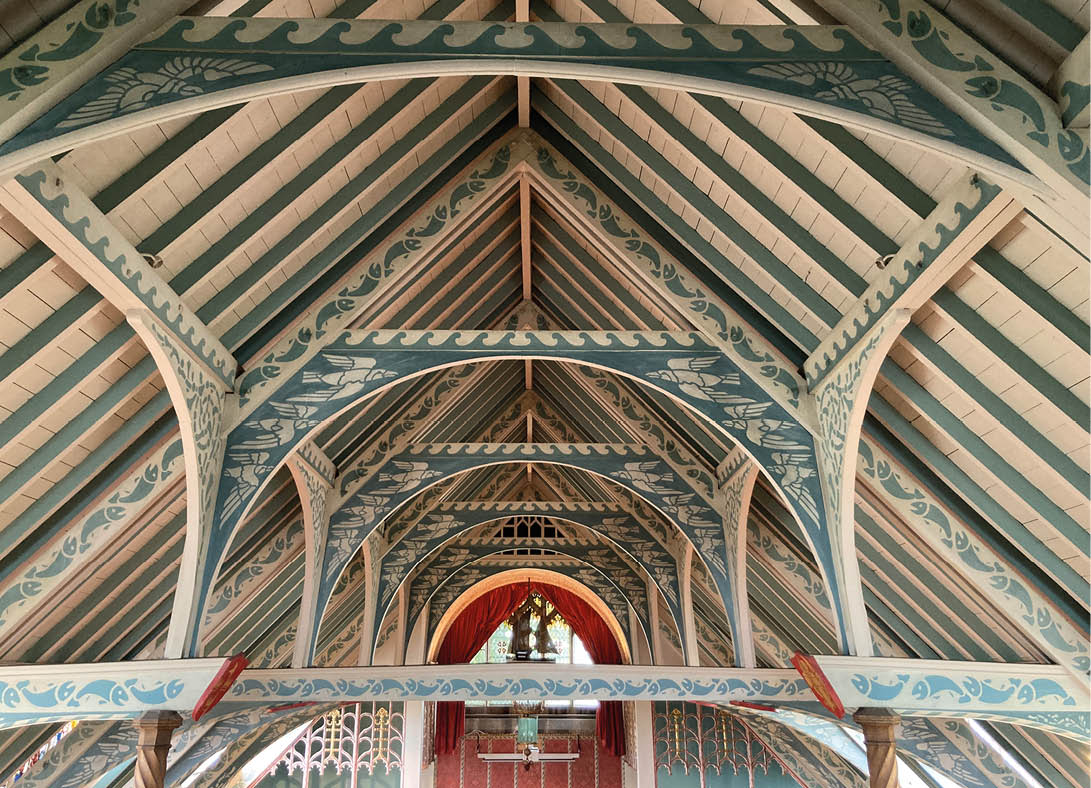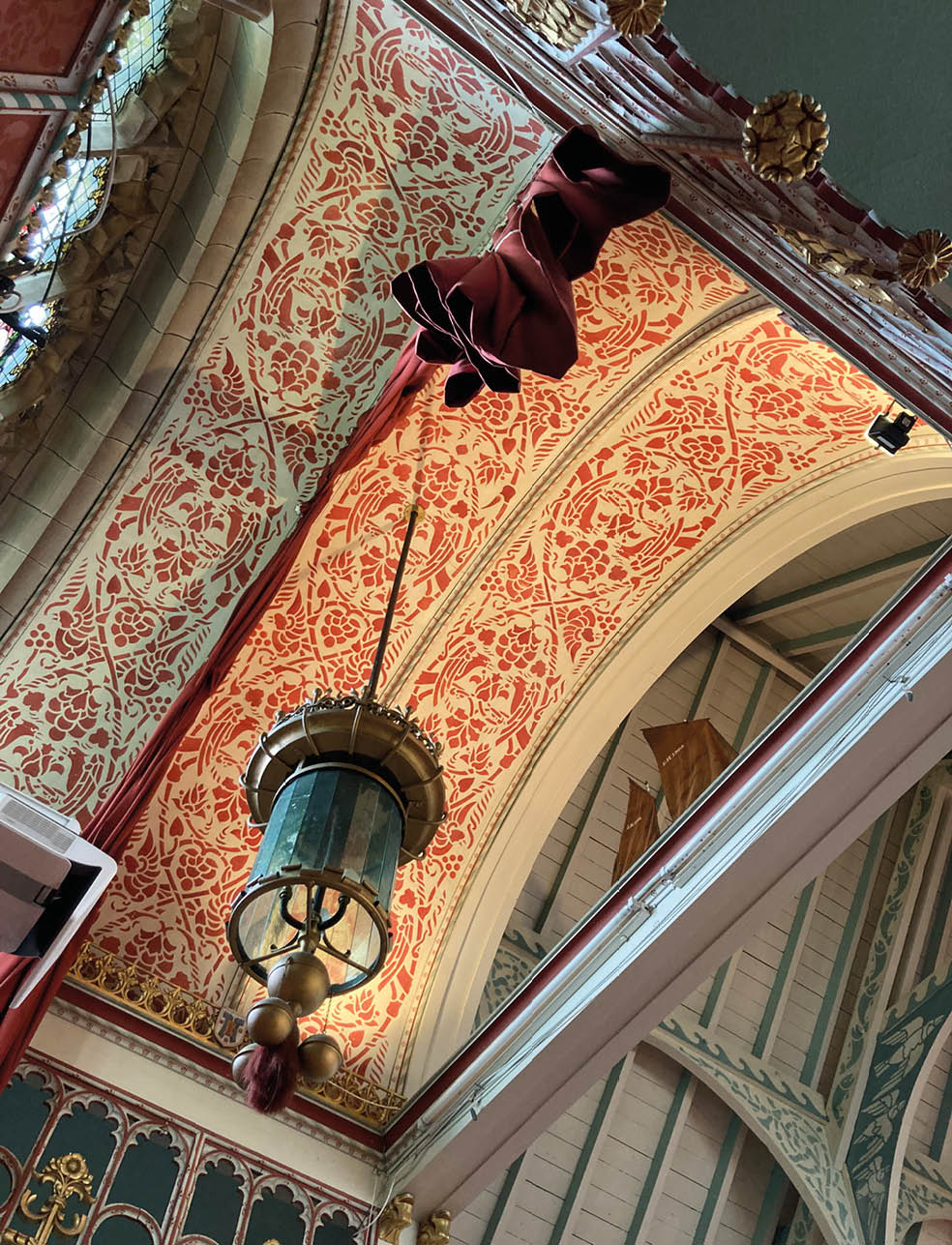Heritage consultant David Hicks brings us the stories behind some of East Lothian’s historic properties.
The phrase ‘hidden gem’ can be a little overused, but it really is an apt description of Chalmers Memorial Church. This is a building with a distinctive sense of place, built and decorated to serve the local fishing community. It also represents a high point in Scotland’s Arts and Crafts Movement, with a dramatic interior that celebrates traditional skills and creates a moving space for worship.
The church was built in 1904, at a time when the harbours at Port Seton and Cockenzie were bustling with fishing boats, and the herring trade was booming. It was designed by the well-known local architect Arthur Sydney Mitchell, a key exponent of the Arts and Crafts Movement, whose previous work included unique buildings such as Well Court and Ramsay Gardens in Edinburgh.
The exterior is certainly distinctive, designed with a ‘saddleback’ tower with two sloping sides and a small spire or ‘flèche’, taking inspiration from medieval Gothic architecture. But the interior is simply stunning.
The open timber roof is the most immediately striking feature, perhaps resembling the hull of a boat. Its beams are painted and stencilled with stylised fish, birds and waves in blue and white. The roof also has eight decorative red shields, with designs picked out in gold representing the four gospels and other religious symbols. The ceiling of the chancel is stencilled as well, this time in cream and red, along with a model fishing boat displayed on a tie-beam.
As with any Arts and Crafts building, great care and attention was paid to the details. Look out for the stair to the pulpit, with a carving depicting the miracle of the draught of fishes. There is some evidence to suggest that this is the work of William and Alexander Clow, who were responsible for much of the wood carving in the Thistle Chapel of St Giles’ Cathedral. There are also stained glass windows by the artists Margaret Kemp and Margaret Chilton, recognised as two of the finest craftspeople of their time.
The church has changed very little since it was first built, and careful restoration has ensured it still has an impact on visitors. As the architectural historian John Hume once wrote: “This is, for me, one of the most life-enhancing church buildings in Scotland”.




